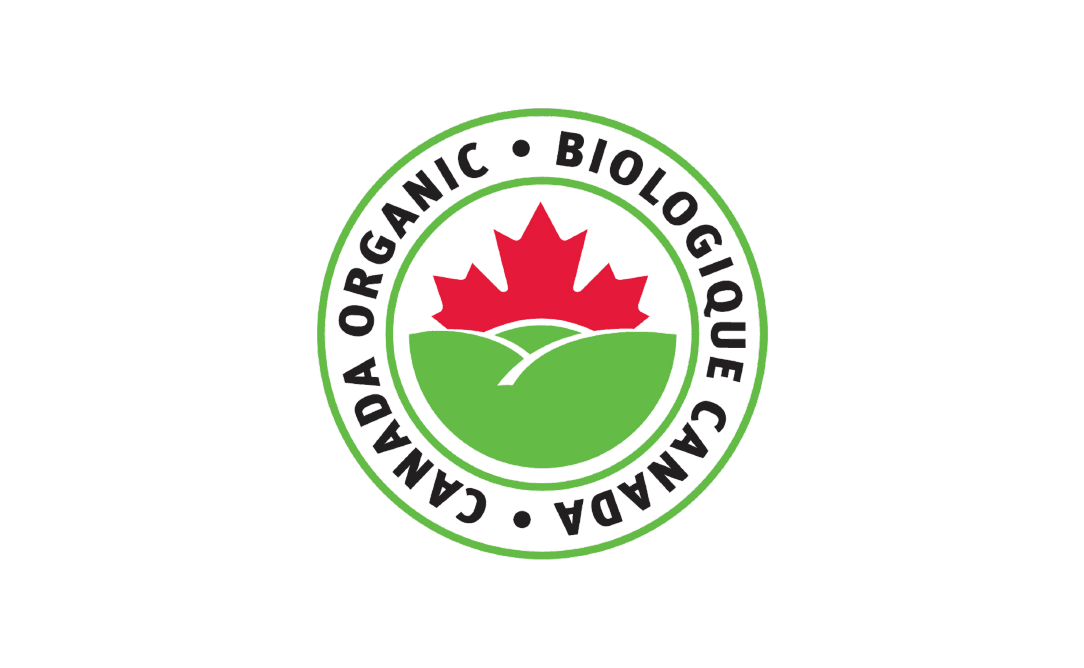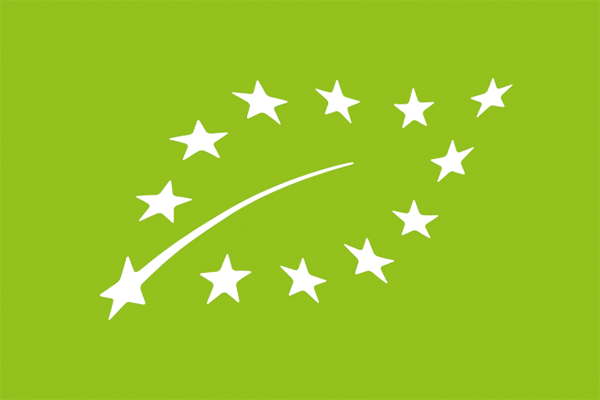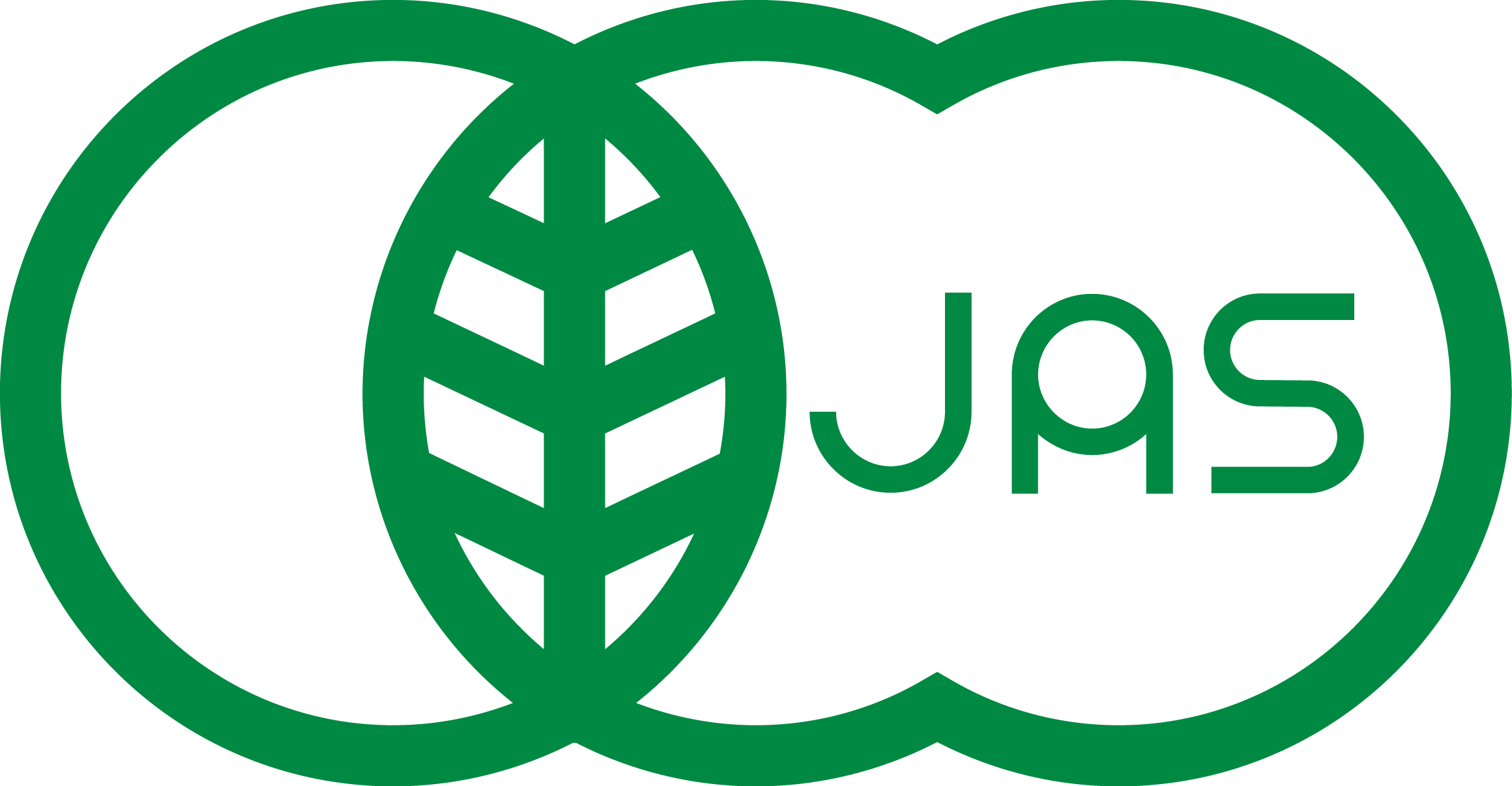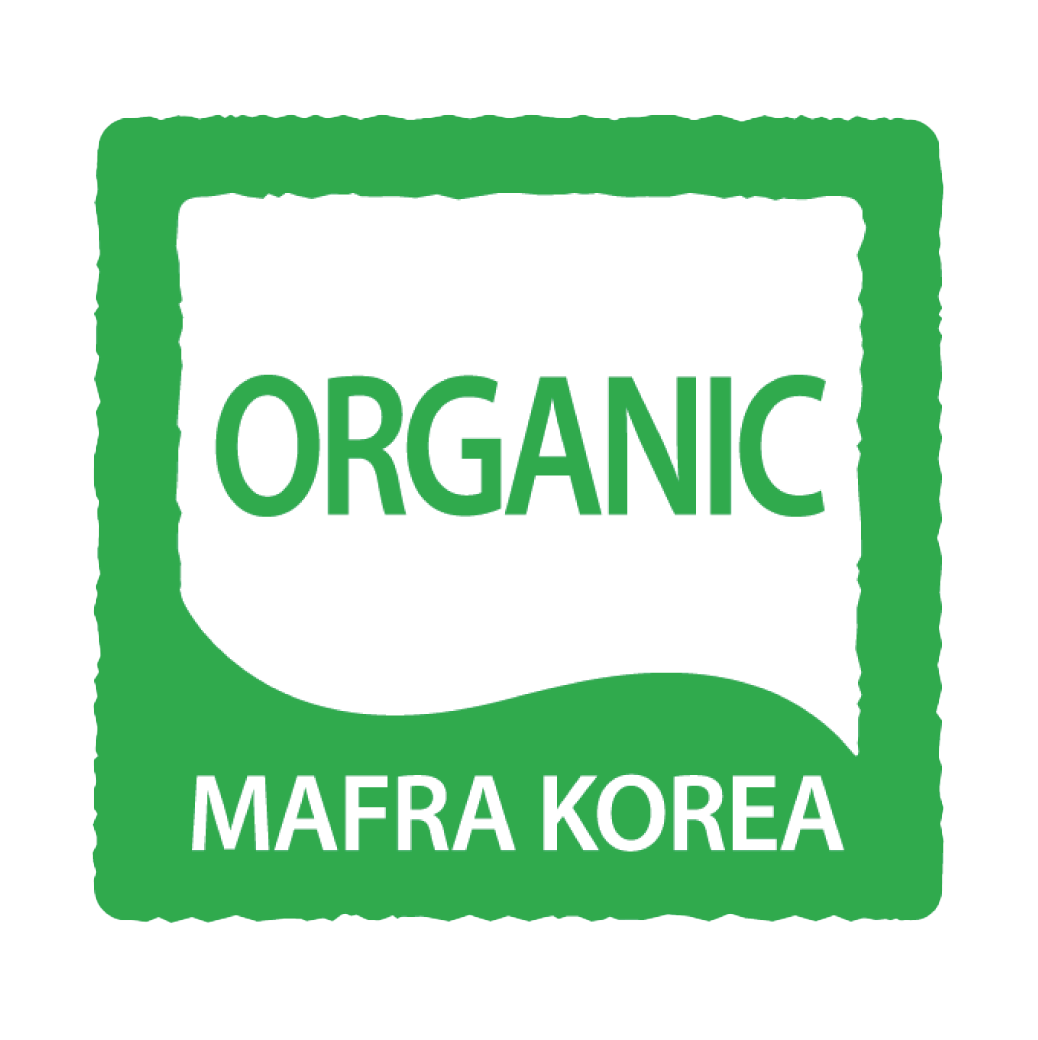International Market Labeling Guide
Different countries have different rules and regulations governing the labeling of organic products. The guides below identify unique organic labeling issues in markets where OCIA operators regularly export product.
Though the guides contain important information about labeling requirements, they are not comprehensive guides. Organic products may be subject to additional national regulations and laws related to food labeling or other standards. We strongly recommend you collaborate with your trusted importer to ensure you remain in compliance with all food labeling requirements for the destination market.
IMPORTANT NOTE: All labels applied by OCIA-certified operators must be pre-approved by OCIA prior to printing.
Labeling Guides by Country
| Canada | EU/UK/Switzerland | Japan | Korea | Taiwan | Mexico (Coming soon!) |
CANADA

Canadian Labeling Requirements
All organic food products sold in Canada must meet labeling requirements set by the Canadian organic standards (COR). Basic labeling requirements are outlined below.
Additional information about COR standards/regulations can be found HERE.
100% Organic
In Canada, the phrase “100% Organic” is prohibited on labels. Products containing 100% organic materials may be labeled as “Organic.
Organic ingredients must be identified on the ingredient list as organic.
At least 95% Organic Ingredients
Products that are at least 95% organic may be labeled as “Organic” or “organically grown”.
Organic ingredients must be identified on the ingredient list as organic. An organic ingredient percentage statement, in addition to the term “organic” is allow.
- Ex: 97% Organic Ingredients
70-95% Organic Ingredients or “made with Organic…”
The phrase “Made with Organic” is prohibited, as are the use of the USDA logo and COR seals.
Product labels must:
-
- State the percentage of organic ingredients included
- Ex. 80% Organic Ingredients OR Contains 80% Organic Ingredients
- Use the same size font for the words “organic ingredients” as other words, numbers, signs, or symbols on the label
- Identify organic ingredients used in the product
- State the percentage of organic ingredients included
Different labels may be necessary for domestic and exported products.
<70% Organic
Use of the USDA logo and COR seal are prohibited, and products do not require certification.
Label may only indicate organic ingredient(s) in the product’s ingredient list.
Bilingual
All organic claims on retail labels must appear in both English and French.
Certifier Identification
Organic certifier must be identified by name on all labels (including PLU labels) for any/all products which are labeled as “organic”, “contains X% organic ingredients”, “X% organic ingredients”, etc.
The statement “certified organic by OCIA International” may be used anywhere on the label, and the OCIA seal is optional.
Wholesale Containers/ Produce Boxes/ Non-Retail Packaging
Non-retail products are exempt from the bilingual requirements so long as they are not sold directly to consumers. All other labeling requirements are the same as above.
If a product is transported in a manner that makes labeling on the packaging difficult (ex. by railcar), information typically found on the package can be included on accompanying documents.
When a product is not NOP compliant, containers & shipping documents must be labeled for “export only”.
COR Seal
Use of the COR seal is optional.
The COR seal may be used only on products that are compliant or equivalent to the COR standards.
COR regulations require the seal meet specific format and color guidelines:
“The logo displayed in either black with a white background, in black with a transparent background, or in color. If displayed in color, the background is white or transparent, the outer and inner borders are green (Pantone no. 368), the maple leaf is red (Pantone no. 186) and the lettering is black.”
All products imported into Canada using the COR seal must include the phrase “Imported” or “Imported From (country of origin”, or “Product of (listed country of origin)” in the same visual field as the seal.
USDA NOP Seal
Use of the USDA organic seal is voluntary.
Private Labels
OCIA certified operators who are located in Canada and certified to COR standards may package private label products and/or receive private label certification directly. Certified private labelers are not required to identify the co-packer on the label as long as appropriate inspections verify the use of compliant packaging, COR certified co-packers, and complete record keeping/traceability.
Wine Labels
The COR seal may only be used on wines that are composed of 95% or more organic ingredients.
Wines compliant with USDA NOP standards using Sulfur Dioxide may be labeled “Organic” under COR labeling requirements. Master cases/other markings must state “for export only”.
Pet Food, Personal Care, Natural Health Products
COR regulations do not cover pet food, personal care products, and natural health products, and these are therefore not covered by the NOP/COR equivalence arrangement.
Products may be sold as NOP certified in Canada.
Reference to COR is prohibited.
European Union, United Kingdom, and Switzerland

EU/UK/Switzerland Labeling Requirements
US operators certified to NOP organic standards may ship to EU member states under the US/EU Equivalence Arrangement, the UK under the US/UK Equivalence Arrangement, and Switzerland through the US/Swiss Equivalence Arrangement.
Canadian operators certified to Canada Organic Regime (COR) may ship to EU member states under the Canada/EU Equivalence Arrangement and the UK under the Canada/UK Equivalence Arrangement. Canadian operations certified to NOP organic standards may ship to Switzerland through the Canada/Swiss Equivalence Arrangement.
Additional information about EU standards/regulations can be found on HERE.
100% Organic
The phrase “100% Organic” is prohibited on labels. Products containing 100% organic materials may be labeled as “Organic”.
Organic ingredients must be identified on the ingredient list as organic.
At least 95% Organic Ingredients
Products that are at least 95% organic may be labeled as “Organic”, “organically grown”, etc.
Organic ingredients must be identified on the ingredient list as organic.
70-95% Organic Ingredients or “Made with Organic”
Products with less than 95% organic ingredients are prohibited from using the phrase “Made with Organic (specified ingredients or food groups)”, and they may not use the USDA logo, COR seal, EU seal, or OCIA name or seal.
Products may be exported to the EU if they meet the following labeling requirements:
- Organic claims are only allowed for identification of organic ingredients and may only appear on the ingredient panel.
- The total percentage of organic ingredients in proportion to the total quantity of ingredients of agricultural origin must be identified in the ingredient panel.
- The same font color, size, and style must be used for all information in the ingredient panel including statements about organic materials.
- Certifier control number is required.
- The word “organic” is prohibited outside of the ingredient statement.
Certifier Identification
Certifier control number must be on all retail labels.
If the EU organic seal is used, OCIA’s control number must be in the same visual field as the seal.
Wholesale Containers/ Produce Boxes/ Non-Retail Containers
Non-retail containers/produce boxes or accompanying documents (ex: invoices, BOLs) must contain:
- Name and address of certified operation
- Name of product and its organic status
- Certifier’s control number and/or identify certifier by name/seal
- Traceability information where applicable
When not NOP/COR compliant, containers and shipping documents must be labeled for “export only”.
EU Organic Seal
Use of the EU organic seal is optional and may be used on products that are compliant or equivalent to EU standards.
All products imported into the EU using the EU Seal must indicate the certifier control number and source of ingredients within the same visual field as the seal, and should use one of the following statements:
- “EU Agriculture” if the agricultural raw material has been farmed in the EU
- “Non-EU Agriculture” if the agricultural raw material has been farmed outside the EU
- “Eu/non-EU Agriculture” if part of the agricultural raw materials has been farmed in the EU and part outside the EU
Specific country name(s) may be used instead of the terms “EU” or “non-EU” if all agricultural materials have been farmed in the same country.
COLORS and FORMAT
The EU organic seal must meet specific format and colors as defined by REG (EU) 2018/848. The seal is a green (Pantone no. 376) rectangle with white stars in the shape of a leaf. The rectangle must be at least 9mm high and 13.5mm wide, and a height to width ration of 1 to 1.5 must be maintained.
NOTE: The UK and Switzerland do not have official organic seals. Products sold as organic may use any seal for which they are compliant. Use of the EU seal is common. If using the EU Seal, all EU labeling requirements must be met.
National Seal
Use of the USDA or COR organic seal is voluntary for products labeled “Organic” (95-100% organic ingredients).
Use of the USDA or COR seal must meet USDA NOP or COR seal requirements.
Wine Labels
US wines using sulfur dioxide (<100 ppm total sulfites) and meeting EU or Swiss wine production requirements may be labeled “Organic” and use the EU seal when produced for export to the EU, the UK, or Switzerland.
Master cases or other markings must indicate “for export only” as these wines may not be sold as Organic in the US.
Wines produced before August 1, 2012: Additional labeling restrictions may apply for organic wine exported to the EU, the UK, or Switzerland.
Cosmetics
Cosmetics are not covered by the US/EU equivalence arrangement and may not be labeled with the EU seal. The production and labeling of organic cosmetics is not regulated at the EU level. Operations should contact their importer or national authorities for country-specific requirements.
Japan

Japanese Labeling Requirements
All organic food products sold in Japan must meet Japanese Agricultural Standards (JAS) organic labeling requirements. Basic labeling requirements are outlined below.
Additional information about COR standards/regulations can be found on HERE.
100% Organic
Japan does not have a “100% Organic” labeling category. Though the claim is not officially recognized, it is also not prohibited. Labels may contain either “Organic” or “100% Organic”.
NOTE: The phrase “100% Organic” is discouraged.
At least 95% Organic Ingredients
May be labeled “Organic”, “Organically grown”, etc.
70-95% Organic Ingredients or “Made with Organic”
Japan does not have a “made with” organic labeling category, and “made with organic (specified ingredients or food groups” phrases/claims are prohibited. Products must contain at least 95% organic content to bear an organic label in Japan.
Products with less than 95% organic ingredients cannot be represented as organic in any capacity or include the statement “Certified by OCIA” or include OCIA’s seal.
Certifier Identification
The name and/or seal of the accredited certifier must be included on the product’s label.
Wholesale Containers/ Produce Boxes/ Non-Retail Containers
Non-retail containers/produce boxes or accompanying documents (ex: invoices, BOLs) must contain:
- Name and address of certified operation
- Name of product and organic status
- Identify OCIA International as certifier
- Traceability information where applicable
JAS Organic Seal
The JAS seal is required on retail and consumer-facing products sold as organic in Japan.
The JAS seal may be applied in Japan by JAS-certified importers, exporters, or processors, or applied by foreign companies through a consignment contract with a JAS-certified importer, wherein Japan recognizes the exporter’s standards as equivalent to their own. The JAS seal is unique for every JAS accredited certifier.
All traded retail products’ labels or stickers must state, “Certified Organic by (name of Japanese or USDA-accredited body) below the information identifying the handler or distributor of the product.
National Seal
Use of the USDA or COR seal is voluntary and must meet USDA NOP or COR requirements if used.
Alcohol/Wine
The US/Japan equivalence does not cover alcohol/wine, and these products therefore cannot use the JAS Organic seal. Alcohol/Wine may be sold as USDA NOP or COR certified organic in Japan and labeled with the word “organic” in English and Japanese.
If labeled with the word “organic” in Japanese, alcohol must be accompanied by an organic certificate. USDA NOP certified wine not eligible to be labeled as “Organic Wine” in the USA must be labeled as “Made with organic grapes” when exported to Japan.
Honey, Seaweed, Non-Food Process Products
Products containing up to 5% honey may use the JAS seal and be exported to Japan under the equivalences. Pure honey, products containing over 5% honey, seaweed, and non-food processed products (ex: personal care items) are not covered under the equivalencies. They may be sold as USDA NOP or COR certified organic in Japan but cannot use the JAS Organic seal.
Korea

Korean Labeling Requirements
Under the equivalency agreement, only process products may be exported to Korea. All processed organic products exported to Korea must meet the below guidelines and comply with Korean organic standards as outlined by the Korean Ministry of Agriculture, Food, and Rural Affairs (MAFRA).
Additional information about MAFRA organic standards/regulations can be found on HERE.
100% Organic
The phrase “100% Organic” is prohibited. Products containing 100% organic ingredients may be labeled as “Organic”.
At least 95% Organic Ingredients
Products with at least 95% organic ingredients may use the label “Organic”, “Organically Grown”, etc.
Products containing nonorganic ingredients must include a percentage statement, and non-organic ingredients must not be used as part of the product name.
70-95% Organic Ingredients or “Made with Organic”
Korea does not have a “made with organic” labeling category. Products with less than 95% organic ingredients are prohibited from using the phrase “Made with Organic (specific ingredients or food groups” and similar statements and cannot include the statement “Certified organic by OCIA” or the use the OCIA seal.
Products not covered under the arrangement cannot list individual organic ingredients as organic in the ingredient statement.
Retail Labels
-
-
- Name and address of final manufacturer listed as “Manufactured by…”
- “Packaged in: USA”
- Manufacturer’s Certifier
- Manufacturer’s 10 Digit NOP ID
- ID must match the number listed on the NAQS export certificate
- Certified private label owners are responsible for verifying with their importer which NOP ID is required to be listed on labels
- Telephone number of the seller/importer
-
Certifier Identification
The manufacturer’s accredited certifier must be identified on the label by name and/or seal.
Wholesale Containers/Produce Boxes/Non-Retail Containers
Non-retail containers/produce boxes and/or accompanying documents (ex: invoices, BOLs) must include:
-
-
- The name and address of the final certified manufacturer
- The name of the product and its organic status
- Identify the manufacturer’s certifier
- Manufacturer’s 10 Digit NOP ID
- ID must match the number listed on the NAQS export certificate
- Certified private label owners are responsible for verifying with their importer which NOP ID is required to be listed on labels.
- Traceability information where applicable
-
Organic Seal
Inclusion of the Korean organic seal is optional for products compliant/equivalent to Korean organic standards.
The Korean organic seal must be used in specific format and colors as defined by the MAFRA Food Code:
-
-
- The seal is a green (C80+Y100) rectangle with a white taegeuk shape within. The height of the logo is .95xW. The space between the white figure and the delimiting outer lines (left, upper, and right lines) is .1xW. The starting point of the taegeuk circle in the lower white section of the logo on the left is .55xW below from the upper section, and the end point of the taegeuk circle on the right is .75xW below the upper section.
- Typeface is Gothic and the color for “organic” should match the logo, while “MAFRA KOREA” should appear in white.
- Acceptable color variations include: blue (C100+M70), red (M100+Y100+K10), and black.
- The size of the seal may change based on packaging size.
-
USDA NOP Seal
Use of the USDA Seal is voluntary. If used, seal must meet all USDA NOP requirements.
Third Country Seals
Third country organic seals or only permitted if a product is directly certified to the countries organic standards. Equivalency arrangements do not apply.
Raw or Unprocessed Products
Under the terms of the current agreement, raw and/or unprocessed products are not allowed to be exported to Korea. Exporting these products requires direct certification to the Korean standard. Products not covered under the arrangement cannot list individual organic ingredients as organic in the ingredient statement.
Wine Labels
Under the US/Korea Equivalency Arrangement, organic wine may be labeled “organic” and exported to Korea.
Wine meeting USDA’s “Made with Organic” standard (e.g. wine containing sulfites) cannot be represented as organic in Korea or make any organic claims. Labels cannot include statements such as “Certified organic by OCIA”, or include the OCIA seal.
Wine products not covered under the arrangement cannot list individual organic ingredients as organic in the ingredient statement.
Non-Food Products
Non-food products, like personal care items, are not covered under the US/Korea equivalence arrangement.
Taiwan
Taiwanese Labeling Requirements
All organic food products sold in Taiwan must comply with Taiwanese organic labeling requirements. Additional information about Taiwanese standards/regulations can be found on HERE.
100% Organic
The phrase “100% Organic” is prohibited. Products that contain 100% organic ingredients may be labeled as “organic”.
At least 95% Organic Ingredients or “Made with Organic”
Products that contain at least 95% organic ingredients may be labeled as “organic”, “made with organic”, etc.
Product must be labeled “organic” in traditional Chinese characters, and it is the responsibility of the importer to verify the accuracy of the label.
Fresh, fortified milk must be labeled as fortified, not fresh.
70-95% Organic Ingredients
Taiwan does not have a “made with organic” labeling category, and the phrase “made with organic (specified ingredients or food groups)” is prohibited. If a product contains less than 95% organic ingredients, no reference to organic may appear on the label or in the ingredient list, including statements like “Certified organic by OCIA” or OCIA’s seal.
Retail Labels
Retail labels must, at a minimum, include the information below:
- Country of origin identified either as a separate statement or within address of certified operation
- Product name and indication of organic
- Certifier name and/or seal
- Name, address, telephone number of Taiwan importer (responsibility of importer)
- Approval Certificate number (responsibility of importer)
Additional information about labeling requirements can be found in Taiwan’s organic labeling guide, Article 18.
Certifier Identification
Certifier must be identified on retail labels by name and/or seal. Identification of certifier is optional on bulk/wholesale products.
Bulk/Wholesale
Products must include the product name and country of origin.
The height and width of characters for country of origin must be at least 3 cm.
Additional information about bulk/wholesale labeling requirements can be found in Taiwan’s organic labeling guide, Article 19.
Taiwan Organic Mark
Only certified organic products produced or processed in Taiwan are permitted to use the Taiwan organic mark.
National Seal
Use of the USDA or COR organic seal is voluntary. Products using the USDA or COR seal must be compliant with USDA/COR requirements.
Wine Labels
Organic wine exported to Taiwan must meet Taiwan’s organic labeling requirements, including labeling the product “organic” in traditional Chinese characters.
Only NOP certified “Organic” wine may be exported to Taiwan. Wine labeled in the USA as “Made with organic grapes” cannot be labeled as “Organic” in Taiwan.
The “Made with organic…” claim is prohibited on wine labels because Taiwan standards to not include this category.
Milk
US fresh milk products with added vitamins and minerals must be labeled “fortified milk” and cannot be labeled “fresh milk”.
Honey
Processed products containing honey may be labelled “Organic” and exported under the US/Taiwan equivalence.
NOTE: Pure honey is excluded from the US/Taiwan and the Canada/Taiwan equivalences.
